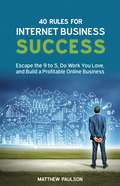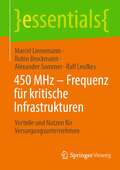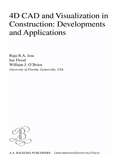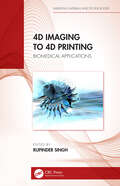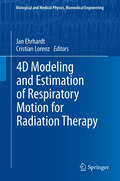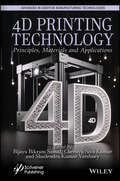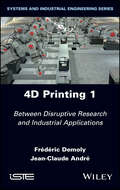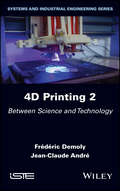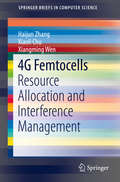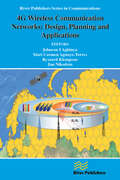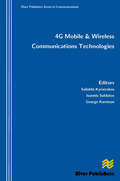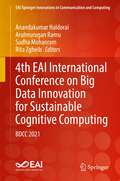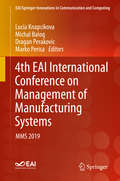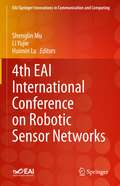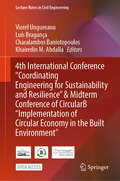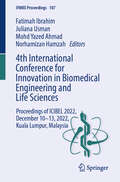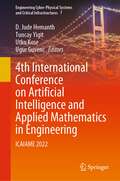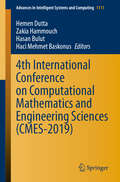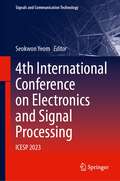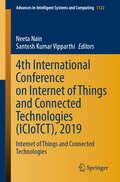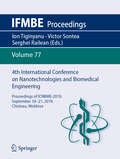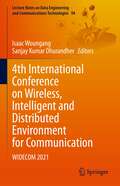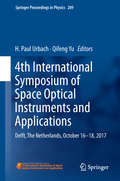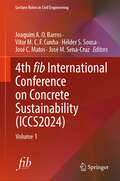- Table View
- List View
40 Rules for Internet Business Success: Escape the 9 to 5, Do Work You Love, and Build a Profitable Online Business
by Matthew Paulson<p>Your Blueprint for Business Success! <p>Stop reading books by pretenders. Read this one and you will learn from an entrepreneur who created a seven-figure internet business from scratch. Matthew Paulson, Founder of Analyst Ratings Network, Lightning Releases and GoGo Photo Contest, has weathered the failures and triumphs of being an entrepreneur for nearly a decade. 40 Rules for Internet Business Success is his collection of core principles and strategies he used to grow his business. <p>By reading 40 Rules for Internet Business Success, you will learn to: <p> <li>Throw away your business plan! Create a scalable business model that actually works. <li>Identify a target market that is desperate for your company's products and services. <li>Launch your first product or service faster by building a minimum viable business. <li>Create a reliable and repeatable marketing strategy to keep new customers coming. <li>Build systems that make your business run like a well-oiled machine. <li>Maximize your company's earnings potential with the three keys of revenue growth.</li> <p> <p>No matter what your goals are for online business success: 40 Rules will help you turn your dream of owning a profitable Internet business into reality. <p>EXTRAS WITH EVERY PURCHASE: After purchasing the book, open it and follow the directions inside to receive access to the two bonus audio interviews titled 40 Bootstrapped Business Ideas and The Seven Deadly Sins of New Entrepreneurs.</p>
450 MHz – Frequenz für kritische Infrastrukturen: Vorteile und Nutzen für Versorgungsunternehmen (essentials)
by Marcel Linnemann Alexander Sommer Ralf Leufkes Robin BrockmannDie Sicherstellung einer zuverlässigen Versorgungsinfrastruktur zur Gewährleistung der Versorgungssicherheit stellt eines der zentralen Themen der Energieversorger in Deutschland dar. Einen wichtigen Beitrag soll hierfür die 450 MHz Frequenz als Frequenz für kritische Infrastrukturen leisten. Für Energieversorger stellt sich daher die Frage, in welchem Kontext die 450 Frequenz zu nutzen ist sowie welche Vor- und Nachteile 450 MHz mit sich bringt.Die Kurzfassung zum Thema 450 MHz – die Frequenz für kritische Infrastrukturen soll dem Leser einen ersten schnellen Einstieg in die energiewirtschaftliche Einordnung, die Frequenz und darauf basierende Technologie sowie die Einsatzmöglichkeiten im eigenen Energieversorgungsunternehmen bieten.
48 Hours: A Novel
by William R. ForstchenFrom the New York Times bestselling author of the smash hit One Second After series comes 48 Hours, a nail-biting and prescient thriller about a solar storm with the power to destroy the world's electrical infrastructureIn 48 hours, the Earth will be hit by a Coronal Mass Ejection (CME) from the Sun, a "Carrington Event" that has the power to shut down and possibly destroy the world's electrical infrastructure. To try and prevent permanent damage, everything goes dark prior to the hit: global communications are shut down; hospital emergency generators are disconnected; the entire internet, media broadcasting, and cell phone systems are turned off. Will the world's population successfully defend itself in the wake of the CME, or will mass panic lead to the breakdown of society as we know it?William R. Forstchen is at his best in 48 Hours, a tale of the resilience of American citizens when faced with a crisis.At the Publisher's request, this title is being sold without Digital Rights Management Software (DRM) applied.
4D CAD and Visualization in Construction: Developments and Applications
by Raja R.A. Issa Ian Flood William J. O’BrienThe construction enterprise is being transformed by visual modelling. Tools such as 3D/4D CAD and virtual reality are now in widespread use in construction. This book is both a survey of the changes being made in practice and a detailed guide to future directions for research and development. This book features a number of detailed case studies and
4D Imaging to 4D Printing: Biomedical Applications (Emerging Materials and Technologies)
by Rupinder SinghThis book focuses on applications of 4D imaging and 4D printing for development of low-cost, indigenous lab-scale solutions for various biomedical applications. It is based on a selection of benchmark open-source 4D imaging solutions including the effect of different stimulus (such as light, electric field, magnetic field, mechanical load, thermal, hydro, and so forth) to better understand 4D capabilities of printed components. The material is covered across nine chapters dedicated to 4D imaging, 4D printing, and their specific biomedical applications illustrated via case studies related to orthopaedic and dental requirements of veterinary patients. The book: •Presents exclusive material on the integration of 4D imaging and 4D printing•Demonstrates the industrial applications of 4D imaging in 4D printing using multiple case studies•Discusses use of open-source 4D imaging tools for biomedical applications•Includes in-house development of smart materials for 4D printing•Reviews low-cost, indigenous lab-scale solutions for various veterinary applications. This book is aimed at graduate students and researchers in Additive Manufacturing, Manufacturing Engineering, Production Engineering, Mechanical Engineering, and Materials Engineering.
4D Modeling and Estimation of Respiratory Motion for Radiation Therapy (Biological and Medical Physics, Biomedical Engineering)
by Cristian Lorenz Jan EhrhardtRespiratory motion causes an important uncertainty in radiotherapy planning of the thorax and upper abdomen. The main objective of radiation therapy is to eradicate or shrink tumor cells without damaging the surrounding tissue by delivering a high radiation dose to the tumor region and a dose as low as possible to healthy organ tissues. Meeting this demand remains a challenge especially in case of lung tumors due to breathing-induced tumor and organ motion where motion amplitudes can measure up to several centimeters. Therefore, modeling of respiratory motion has become increasingly important in radiation therapy. With 4D imaging techniques spatiotemporal image sequences can be acquired to investigate dynamic processes in the patient's body. Furthermore, image registration enables the estimation of the breathing-induced motion and the description of the temporal change in position and shape of the structures of interest by establishing the correspondence between images acquired at different phases of the breathing cycle. In radiation therapy these motion estimations are used to define accurate treatment margins, e.g. to calculate dose distributions and to develop prediction models for gated or robotic radiotherapy. In this book, the increasing role of image registration and motion estimation algorithms for the interpretation of complex 4D medical image sequences is illustrated. Different 4D CT image acquisition techniques and conceptually different motion estimation algorithms are presented. The clinical relevance is demonstrated by means of example applications which are related to the radiation therapy of thoracic and abdominal tumors. The state of the art and perspectives are shown by an insight into the current field of research. The book is addressed to biomedical engineers, medical physicists, researchers and physicians working in the fields of medical image analysis, radiology and radiation therapy.
4D Printing Technology: Principles, Materials and Application (Advances in Additive Manufacturing Technologies)
by Bijaya Bikram Samal Cheruvu Siva Kumar Shailendra Kumar VarshneyThe book serves as a comprehensive guide to 4D printing technology, exploring its principles, materials, and applications while offering valuable insights for researchers, engineers, and innovators in additive manufacturing. 4D Printing Technology: Principles, Materials and Applications is a detailed exploration of 4D printing technology, offering readers a comprehensive understanding of how smart materials and additive manufacturing processes come together to create dynamic, responsive structures. Starting with the foundations of additive manufacturing, this volume introduces readers to the rise of smart materials and the evolution from static 3D printing to adaptive 4D printing. It covers a wide range of topics, including 4D printing at the micro and nano scale, the use of polymers and reinforced materials, and advanced applications in photonics. The volume delves into complex programming of 4D printed materials, discussing various stimuli (thermal, magnetic, light-based) that enable shape-shifting behavior. Each chapter focuses on practical applications, including healthcare innovations like adaptive implants, aerospace components that morph based on environmental conditions, and novel photonic devices. Finally, the book discusses key characterization techniques necessary for analyzing the performance and durability of 4D printed parts. 4D Printing Technology: Principles, Materials and Applications serves as a comprehensive reference and an inspiration for future innovations in this rapidly evolving field. Readers will find the book Comprehensively covers 4D printing technologies, from foundational principles to advanced applications in photonics, robotics, and micro/nano devices; Includes contributions from international experts in smart materials, advanced manufacturing techniques, and application-specific innovations; Covers important research developments in this field from the last decade; Provides detailed discussions on materials, shape programming, and characterization techniques for 4D printed structures; Examines various applications, future directions, and innovations in 4D printing, smart materials, and additive manufacturing technologies. Audience Manufacturing engineers, materials scientists, additive manufacturing specialists in all industries, academics, and researchers in advanced materials, biomedical engineering, photonics, and nanotechnology.
4D Printing, Volume 1: Between Disruptive Research and Industrial Applications
by Jean-Claude Andre Frederic DemolyAny time objects and their (self-)organization are to be put into use, their models and methods of thinking as well as their designing and manufacturing need to be reinvented.4D printing is a future technology that is capable of bringing 3D objects to life. This ability, which gives objects the power to change shape or properties over time through energy stimulation from active materials and additive manufacturing, makes it possible to envisage technological breakthroughs while challenging the relationship between people and objects.4D Printing 1 presents the different facets of this technology, providing an objective, critical and even disruptive viewpoint to enable its existence and development, and to stimulate the creative drive that industry, society and humanity need in the perpetual quest for evolution and transformation.
4D Printing, Volume 2: Between Science and Technology
by Jean-Claude Andre Frederic DemolyWho hasn&’t dreamed of seeing matter transformed in a way that suits you? This is the goal of 4D printing, using materials that can change in terms of shape and property under the effect of energy stimulation. From the description of the actions and actuators, the authors show the weaknesses that limit the industrialization of 4D printing processes; these are the modes of energy stimulation.To prepare for the future, two chapters are introduced: &“Material-Process Duality in Industrial 4D Printing&” and &“How to Approach 4D Printing in Design&”. If the capture and reuse of 4D printing knowledge is necessary for this objective, the conclusion leaves the existing myth around the 4D printing theme and proposes a &“draft&” roadmap that should be the subject of reflection and scientific debate on a concept that is still immature, but full of promise.
4G Femtocells: Resource Allocation and Interference Management (SpringerBriefs in Computer Science)
by Xiaoli Chu Haijun Zhang Xiangming WenThis brief examines resource allocation and interference management for 4G femtocells. It introduces 4G femtocells in the context of 4G mobile networks and discusses related technical challenges in resource allocation and interference management. Topics include ant colony algorithm based downlink resource allocation, intelligent scheduling and power control, uplink and downlink for two-tier networks, quality of service (QoS) constraints and the cross-tier interference constraint. The authors present algorithms to alleviate common femtocell-related problems such as subchannel power allocation. The complexity of the proposed resource allocation algorithms is analyzed, and the effectiveness of the proposed algorithms is verified by simulations. This concise and practical book directly addresses common problems relating to femtocells and resource management. It serves as a useful tool for researchers in the field. Advanced-level students or professionals interested in femtocells and networks will also find the content helpful.
4G Wireless Communication Networks: Design Planning and Applications
by Mari Carmen Aguayo-Torres Ryszard Klempous Jan Nikodem Johnson I AgbinyaThis book is a detailed compendium of these major advancements focusing exclusively on the emerging broadband wireless communication technologies which support broadband wireless data rate transmissions.
4g Mobile and Wireless Communications Technologies (River Publishers Series In Communications Ser.)
by Sofoklis Kyriazakos Ioannis Soldatos George KaretsosMobile and wireless communications are moving towards a new era that will be characterized by the seamless collaboration of heterogeneous systems, the need for high speed communications while on the move and for advanced services with quality guarantees. Recent market research studies show that most of the traffic in the future wireless networks will be produced by mobile multimedia services which are expected to proliferate by the year 2010. On the other hand mobile and wireless communications technology is becoming more and more important in developing countries where people demand fast deployment and low cost for broadband wireless internet services.The objective of this volume is to gather research and development on topics shaping the fourth generation (4G) in mobile and wireless communications and reveal the key trends and enabling technologies for 4G. We envisage 4G wireless communication systems as IP based solution providing integrated services (voice, data, multimedia) regardless of time and end-users? location. 4G technologies will manifest the benefits of the wireless and wired technologies convergence, through enabling a wide range of innovative (both indoor and outdoor) applications. 4G applications will feature premium quality, high security and an affordable cost. The vision, though fantastic, is associated with a host of technical and technological challenges.A great deal of the latter are discussed in the articles of this volume, which aims at providing insights on the research issues and solutions that are directly associated with leading edge 4G technologies and services.Taking into account recent developments in the world of wireless communications we have given emphasis to cover all these technologies and aspects that are considered as cornerstones for achieving the goals set for 4G and that will further boost research and development of next-generation mobile communications.
4th EAI International Conference on Big Data Innovation for Sustainable Cognitive Computing: BDCC 2021 (EAI/Springer Innovations in Communication and Computing)
by Anandakumar Haldorai Arulmurugan Ramu Sudha Mohanram Rita ZgheibThis book features the proceedings of the 4th EAI International Conference on Big Data Innovation for Sustainable Cognitive Computing (BDCC 2021). The papers feature detail on cognitive computing and its self-learning systems that use data mining, pattern recognition and natural language processing (NLP) to mirror the way the human brain works. This international conference focuses on technologies from knowledge representation techniques and natural language processing algorithms to dynamic learning approaches. Topics covered include Data Science for Cognitive Analysis, Real-Time Ubiquitous Data Science, Platform for Privacy Preserving Data Science, and Internet-Based Cognitive Platform.
4th EAI International Conference on Management of Manufacturing Systems: MMS 2019 (EAI/Springer Innovations in Communication and Computing)
by Dragan Perakovic Michal Balog Lucia Knapcikova Marko PerisaThe book presents the proceedings of the 4th EAI International Conference on Management of Manufacturing Systems (MMS 2019), which took place in Krynica Zdroj, Poland, on October 8-10, 2019. The conference covered Management of Manufacturing Systems with support for Industry 4.0, Logistics and Intelligent Manufacturing Systems and Applications, Cooperation management and its effective applications. Topics include RFID Applications, Economic Impacts in Logistics, ICT Support for Industry 4.0, Industrial and Smart Logistics, Intelligent Manufacturing Systems and Applications, and much more.
4th EAI International Conference on Robotic Sensor Networks (EAI/Springer Innovations in Communication and Computing)
by Huimin Lu Li Yujie Shenglin MuThis book presents papers presented at the 4th EAI International Conference on Robotic Sensor Networks. The conference explored the integration of networks and robotic technologies, which has become a topic of increasing interest for both researchers and developers from academic fields and industries worldwide. The authors explore how big networks are becoming the main tool for the next generation of robotic research, owing to the explosive number of networks models and the increased computational power of computers. The papers discuss how these trends significantly extend the number of potential applications for robotic technologies while also bringing new challenges to the networks’ communities. The 2nd EAI International Conference on Robotic Sensor Networks was held online on November 21-22, 2020.
4th International Conference "Coordinating Engineering for Sustainability and Resilience" & Midterm Conference of CircularB “Implementation of Circular Economy in the Built Environment” (Lecture Notes in Civil Engineering #489)
by Viorel Ungureanu Charalambos Baniotopoulos Luís Bragança Khairedin M. AbdallaThis open access book gathers the proceedings of the 4th International Conference “Coordinating Engineering for Sustainability and Resilience” (CESARE) & Midterm Conference of CircularB “Implementation of Circular Economy in the Built Environment”, held in Timișoara, Romania, on May 29-31, 2024, as part of the COST Action CA21103. The volume represents the state of the art of sustainability and resilience in modern and future built environment, constructions, and infrastructure, and includes topics such as structural materials and robustness, fire engineering, risk assessment, impact of climate change on the built environment, sustainable resilience of systems in the built environment, smart cities, circular economy, design strategies for product design, integration of renewable energy at building and small urban area scales, restoration & rehabilitation of historical buildings, sustainable infrastructures, wind energy structures, façade engineering, green buildings, and waste management.
4th International Conference for Innovation in Biomedical Engineering and Life Sciences: Proceedings of ICIBEL 2022, December 10–13, 2022, Kuala Lumpur, Malaysia (IFMBE Proceedings #107)
by Fatimah Ibrahim Juliana Usman Mohd Yazed Ahmad Norhamizan HamzahThis book reports on engineering methods and technologies for biomedical applications. It covers sensors and devices for biological and medical purposes, along with their fabrication and testing, and advances in engineering technologies, such as autonomous systems, which can support life science and healthcare in the era of industry 4.0. Based on the proceedings of the 4th International Conference for Innovation in Biomedical Engineering and Life Sciences, ICIBEL 2022, held on December 10–13, 2022, in Kuala Lumpur, Malaysia, this book provides researchers and professionals with a timely snapshot of current issues and challenges in the broad field of biomedical engineering. It is aimed at inspiring future research and fostering interdisciplinary and international collaborations in this field and relating ones.
4th International Conference on Artificial Intelligence and Applied Mathematics in Engineering: ICAIAME 2022 (Engineering Cyber-Physical Systems and Critical Infrastructures #7)
by D. Jude Hemanth Utku Kose Tuncay Yigit Ugur GuvencAs general, this book is a collection of the most recent, quality research papers regarding applications of Artificial Intelligence and Applied Mathematics for engineering problems. The papers included in the book were accepted and presented in the 4th International Conference on Artificial Intelligence and Applied Mathematics in Engineering (ICAIAME 2022), which was held in Baku, Azerbaijan (Azerbaijan Technical University) between May 20 and 22, 2022. Objective of the book content is to inform the international audience about the cutting-edge, effective developments and improvements in different engineering fields. As a collection of the ICAIAME 2022 event, the book gives consideration for the results by especially intelligent system formations and the associated applications. The target audience of the book is international researchers, degree students, practitioners from industry, and experts from different engineering disciplines.
4th International Conference on Computational Mathematics and Engineering Sciences (Advances in Intelligent Systems and Computing #1111)
by Hemen Dutta Zakia Hammouch Hasan Bulut Haci Mehmet BaskonusThis book gathers original research papers presented at the 4th International Conference on Computational Mathematics and Engineering Sciences, held at Akdeniz University, Antalya, Turkey, on 20–22 April 2019. Focusing on computational methods in science, mathematical tools applied to engineering, mathematical modeling and new aspects of analysis, the book discusses the applications of mathematical modelling in areas such as health science, engineering, computer science, social science, and economics. It also describes a wide variety of analytical, computational, and numerical methods. The conference aimed to foster cooperation between students and researchers in the areas of computational mathematics and engineering sciences, and provide a platform for them to share significant research ideas. This book is a valuable resource for graduate students, researchers and educators interested in the mathematical tools and techniques required for solving various problems arising in science and engineering, and understanding new methods and uses of mathematical analysis.
4th International Conference on Electronics and Signal Processing: ICESP 2023 (Signals and Communication Technology)
by Seokwon YeomThis book presents the proceedings of the 4th International Conference on Electronics and Signal Processing (ICESP 2023), which was held in Macau, China during January 13-15, 2023. The book consists of contributions from various authors from both academia and industry, focusing on a diverse aspect of signal processing and information communication systems. The published papers suggest cutting-edge solutions that contribute to the quest for the future applications and communicating systems. The book is a useful reference to research students, research fellows, and scientists and engineers in the corresponding fields.
4th International Conference on Internet of Things and Connected Technologies: Internet of Things and Connected Technologies (Advances in Intelligent Systems and Computing #1122)
by Neeta Nain Santosh Kumar VipparthiThis book presents the proceedings of the 4th International Conference on Internet of Things and Connected Technologies (ICIoTCT), held on May 9–10, 2019, at Malaviya National Institute of Technology (MNIT), Jaipur, India. The Internet of Things (IoT) promises to usher in a revolutionary, fully interconnected “smart” world, with relationships between objects and their environment and objects and people becoming more tightly intertwined. The prospect of the Internet of Things as a ubiquitous array of devices bound to the Internet could fundamentally change how people think about what it means to be “online”. The ICIotCT 2019 conference provided a platform to discuss advances in Internet of Things (IoT) and connected technologies, such as various protocols and standards. It also offered participants the opportunity to interact with experts through keynote talks, paper presentations and discussions, and as such stimulated research. With the recent adoption of a variety of enabling wireless communication technologies, like RFID tags, BLE, ZigBee, embedded sensor and actuator nodes, and various protocols such as CoAP, MQTT and DNS, IoT has moved on from its infancy. Today smart sensors can collaborate directly with machines to automate decision-making or to control a task without human involvement. Further, smart technologies, including green electronics, green radios, fuzzy neural approaches, and intelligent signal processing techniques play an important role in the development of the wearable healthcare devices.
4th International Conference on Nanotechnologies and Biomedical Engineering: Proceedings of ICNBME-2019, September 18-21, 2019, Chisinau, Moldova (IFMBE Proceedings #77)
by Ion Tiginyanu Victor Sontea Serghei RaileanThis book gathers the proceedings of the 4th International Conference on Nanotechnologies and Biomedical Engineering, held on September 18-21, 2019, in Chisinau, Republic of Moldova. It continues the tradition of the previous conference proceedings, thus reporting on both fundamental and applied research at the interface between nanotechnologies and biomedical engineering. Topics include: developments in bio-micro/nanotechnologies and devices; biomedical signal processing; biomedical imaging; biomaterials for biomedical applications; biomimetics; bioinformatics and e-health, and advances in a number of related areas. The book offers a timely snapshot of cutting-edge, multidisciplinary research and developments in the field of biomedical and nano-engineering.
4th International Conference on Wireless, Intelligent and Distributed Environment for Communication: WIDECOM 2021 (Lecture Notes on Data Engineering and Communications Technologies #94)
by Isaac Woungang Sanjay Kumar DhurandherThis book presents the proceedings of the 4th International Conference on Wireless Intelligent and Distributed Environment for Communication (WIDECOM 2021), which took place at University of KwaZulu-Natal, South Africa, October 13-15, 2021. The book addresses issues related to new dependability paradigms, design, and performance of dependable network computing and mobile systems, as well as issues related to the security of these systems. The main tracks include infrastructure, architecture, algorithms, and protocols. The goal of the conference is to provide a forum for researchers, students, scientists and engineers working in academia and industry to share their experiences, new ideas and research results in the above-mentioned areas.
4th International Symposium of Space Optical Instruments and Applications: Delft, The Netherlands, October 16 -18, 2017 (Springer Proceedings in Physics #209)
by H. Paul Urbach Qifeng YuThis book gathers selected and expanded contributions presented at the 4th Symposium on Space Optical Instruments and Applications, which was held in Delft, the Netherlands, on October 16–18, 2017. This conference series is organized by the Sino-Holland Space Optical Instruments Laboratory, a cooperative platform between China and the Netherlands. The symposium focused on key technological problems regarding optical instruments and their applications in a space context. It covered the latest developments, experiments and results on the theory, instrumentation and applications of space optics. The book is split into five main sections: The first covers optical remote sensing system design, the second focuses on advanced optical system design, and the third addresses remote sensor calibration and measurement. Remote sensing data processing and information extraction are then presented, followed by a final section on remote sensing data applications.
4th fib International Conference on Concrete Sustainability: Volume 1 (Lecture Notes in Civil Engineering #573)
by José C. Matos Hélder S. Sousa Vítor M. C. F. Cunha Joaquim A. O. Barros José M. Sena-CruzThis volume presents the proceedings of the fib International Conference on Concrete Sustainability, held in Guimarães, Portugal on 11–13 September 2024. It covers topics such as concrete and advanced materials, structural performance and design, construction methods and management, durability, life cycle design, through-life management and care, resilience, dismantlement, reuse and recycling, & innovation in buildings and civil structure. fib (The International Federation for Structural Concrete) is a not-for-profit association whose mission is to develop at an international level the study of scientific and practical matters capable of advancing the technical, economic, aesthetic, and environmental performance of concrete construction.
